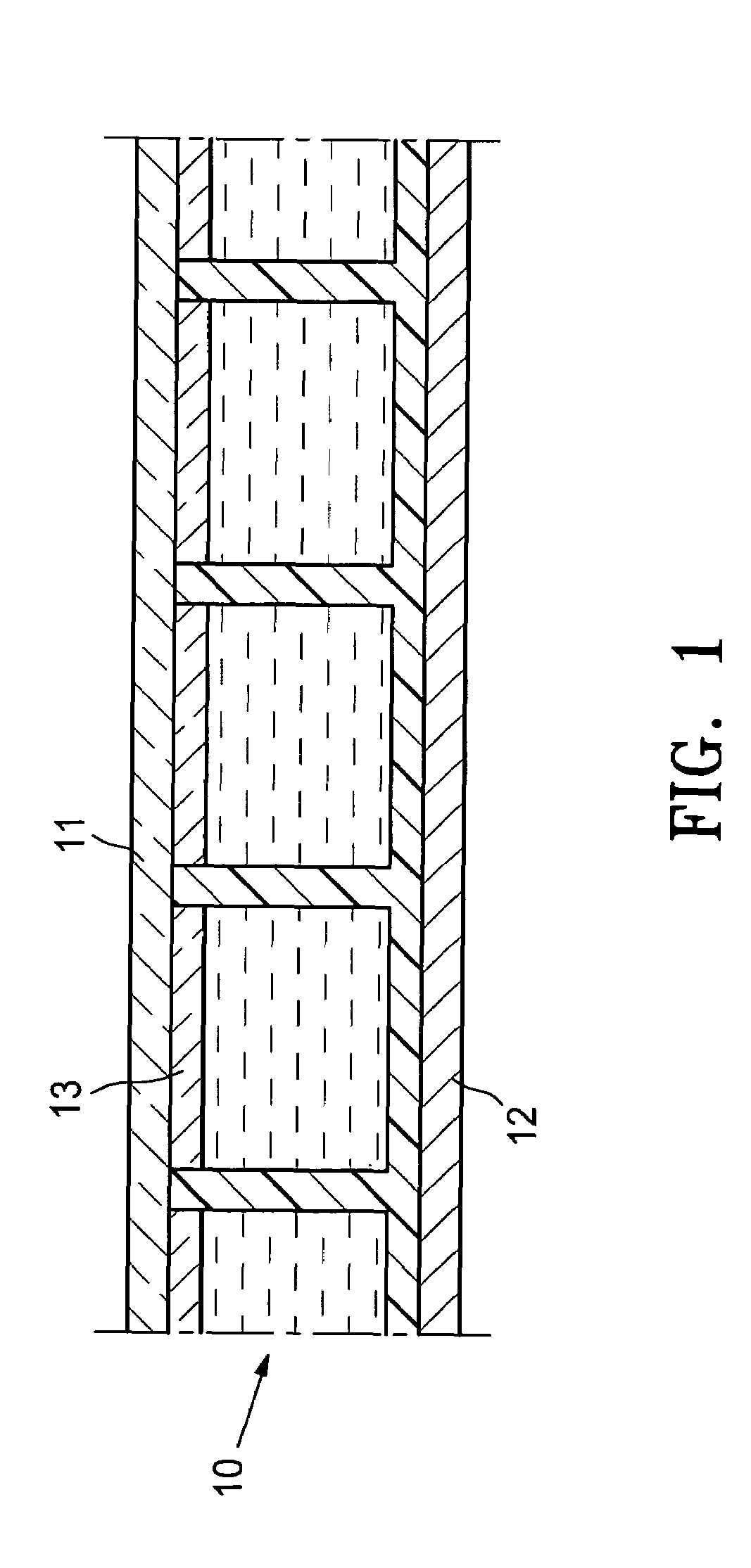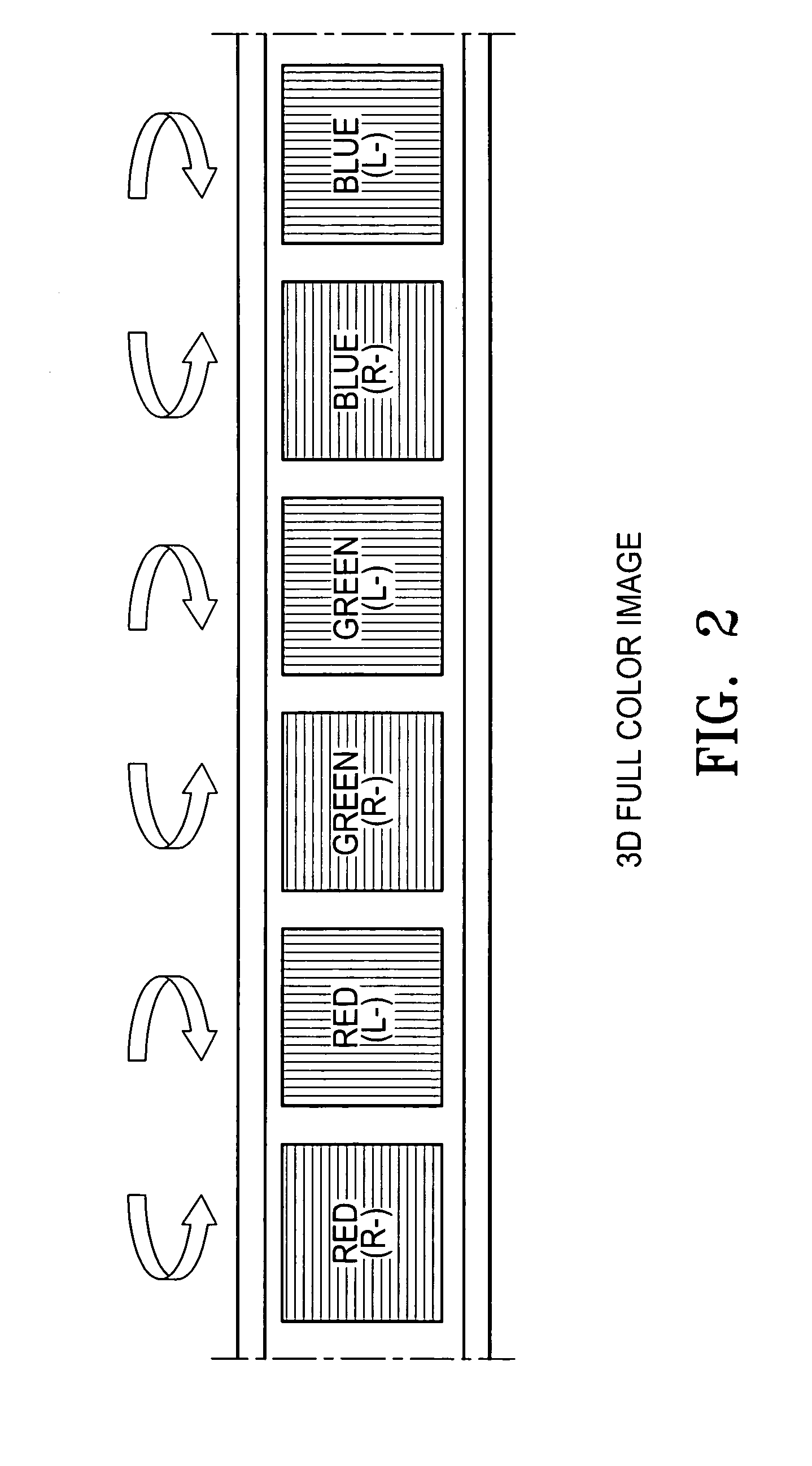Three-dimensional electrophoretic displays
a three-dimensional electrophoretic display and display technology, applied in optics, instruments, electrical equipment, etc., can solve the problems of low cost, unadapted 3-d imagery systems and applications, and large power consumption of backlight and color filters, and achieve the effect of low cos
- Summary
- Abstract
- Description
- Claims
- Application Information
AI Technical Summary
Benefits of technology
Problems solved by technology
Method used
Image
Examples
Embodiment Construction
[0042]Unless defined otherwise in this specification, all technical terms are used herein according to their conventional definitions as they are commonly used and understood by those of ordinary skill in the art.
[0043]The term “microcup” refers to the cup-like indentations created by microembossing or imagewise exposure.
[0044]The term “cell”, in the context of the present invention, is intended to mean the single unit formed from a sealed microcup. The cells are filled with an electrophoretic dispersion which may be an optically active electrophoretic dispersion.
[0045]The term “well-defined”, when describing the microcups or cells, is intended to indicate that the microcup or cell has a definite shape, size and aspect ratio which are pre-determined according to the specific parameters of the manufacturing process.
[0046]The term “aspect ratio” is a commonly known term in the art of electrophoretic displays. In this application, it refers to the depth to width or depth to length rati...
PUM
| Property | Measurement | Unit |
|---|---|---|
| size | aaaaa | aaaaa |
| specific gravity | aaaaa | aaaaa |
| white color | aaaaa | aaaaa |
Abstract
Description
Claims
Application Information
 Login to View More
Login to View More - R&D
- Intellectual Property
- Life Sciences
- Materials
- Tech Scout
- Unparalleled Data Quality
- Higher Quality Content
- 60% Fewer Hallucinations
Browse by: Latest US Patents, China's latest patents, Technical Efficacy Thesaurus, Application Domain, Technology Topic, Popular Technical Reports.
© 2025 PatSnap. All rights reserved.Legal|Privacy policy|Modern Slavery Act Transparency Statement|Sitemap|About US| Contact US: help@patsnap.com



